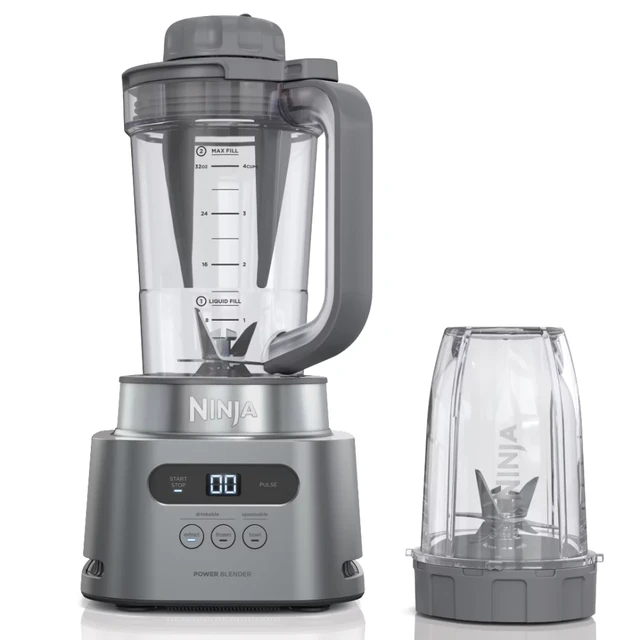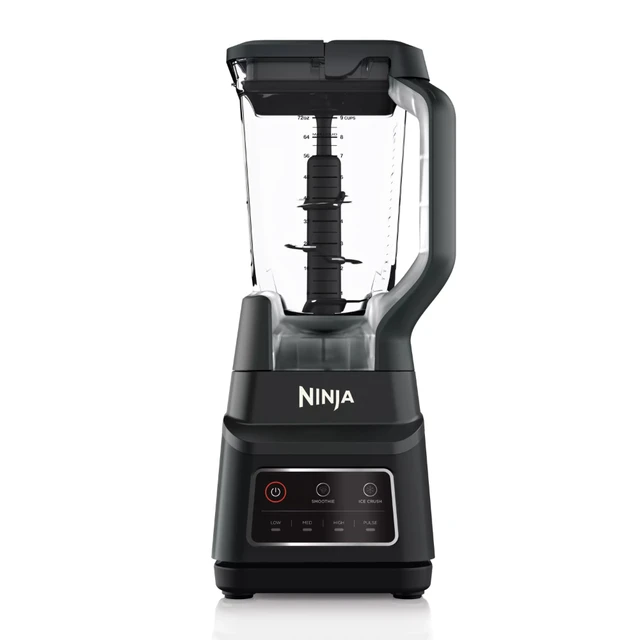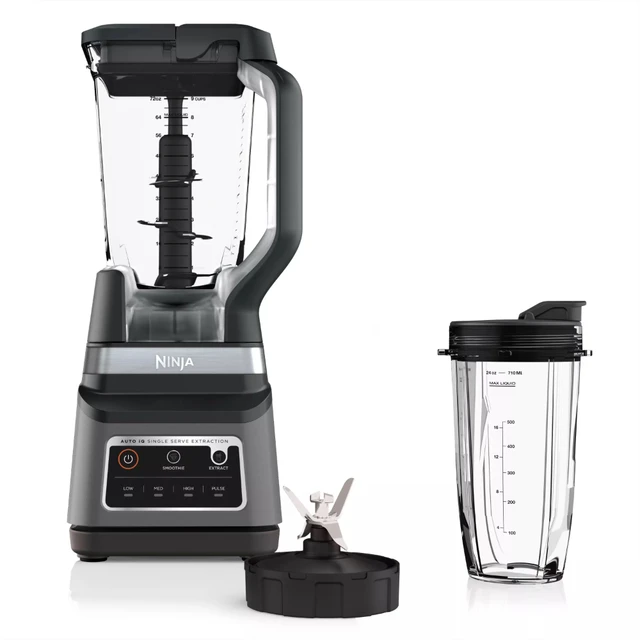
Ninja blenders are powerful and versatile kitchen appliances, but they can sometimes encounter problems that disrupt their performance. Knowing Ninja blender troubleshooting can save you time and frustration, ensuring your blender runs smoothly. This comprehensive guide addresses common Ninja blender troubleshooting scenarios, from power failures and leakages to unusual noises and blending inconsistencies. Read on to understand the solutions to keep your Ninja blender in top shape!
Power Issues
One of the most common problems with Ninja blenders is power-related issues.
Blender not turning on
First, ensure the blender is plugged into a functioning power outlet. Check if the outlet is working by plugging in another device. If the outlet works, inspect the power cord for any visible damage. Sometimes, the problem can be as simple as a loose plug, so make sure the plug is securely connected to the outlet.
Checking the fuse
Some Ninja blenders have a built-in fuse that can blow if the blender overheats or experiences a power surge. Refer to your blender’s manual to locate the fuse and check if it needs to be replaced.
Resetting the blender
Unplug the blender and let it rest for 20-30 minutes before trying again. This cooldown period can reset the blender and resolve minor electrical issues.
Blending Inconsistencies
Inconsistent blending results can be frustrating, but several factors might be causing this issue.
Overloading the blender
Avoid overloading the blending jar. Follow the recommended maximum capacity outlined in the user manual. Overloading can strain the motor and result in uneven blending. Work in smaller batches if necessary.
Proper layering
When adding ingredients, layer them correctly. Place liquids and soft ingredients at the bottom near the blades, followed by harder ingredients like frozen fruits or vegetables. This setup allows for smoother blending and reduces the risk of jamming.
Sharpness of blades
Dull blades can cause inconsistent blending. Inspect the blades regularly and replace them if they appear dull or damaged. Sharp blades ensure efficient processing of ingredients.
 Leakage Issues
Leakage Issues
Experiencing leaks can make using your blender messy and inefficient.
Inspecting the gasket
The gasket (rubber or silicone seal) plays a crucial role in preventing leaks. Check the gasket for any cracks or damage. Ensure it is correctly positioned and not twisted or kinked. Replace the gasket if it shows signs of wear and tear.
Tightening the lid
Ensure the lid and blending jar are securely tightened before starting the blender. A loose lid can cause leaks during operation. Double-check the alignment and lock the lid firmly in place.
Blender assembly
Make sure all parts of the blender are correctly assembled. A misaligned blade assembly or jar base can lead to leaks. Refer to your user manual for proper assembly instructions.
Unusual Noises
Unusual noises during operation can indicate underlying issues that need attention.
Grinding sounds
Grinding noises may indicate that the blades are hitting something solid. Check the blending jar for any hard objects like utensils or large chunks of food. Remove any obstructions and try blending again.
High-pitched squealing
A high-pitched squealing sound can be a sign of dry bearings in the motor. Try adding a few drops of food-grade oil to the bearings if accessible. Otherwise, consult the manufacturer or a professional for maintenance.
Vibration and rattling
Ensure the blender is placed on a stable, level surface. Vibration and rattling can occur if the blender is on an uneven surface. Additionally, check if any parts are loose and secure them properly.
Blender Not Spinning
If the blades are not spinning, the blender cannot perform its primary function.
Inspecting the drive socket
The drive socket connects the motor to the blade assembly. Check for wear or damage to the drive socket and replace it if necessary. A worn drive socket can cause the blades to stop spinning.
Blade assembly
Ensure the blade assembly is correctly installed and not jammed. Food particles or debris can sometimes clog the blades, preventing them from spinning. Clean the blades thoroughly and reassemble the blender.
Motor issues
If the motor is running but the blades are not spinning, there might be an internal motor issue. In such cases, it’s best to contact customer support or a professional technician for further assistance.
Overheating Problems
Overheating can lead to the blender shutting off unexpectedly or reduced performance.
Resting the blender
If the blender shuts off due to overheating, unplug it and let it rest for at least 20-30 minutes before attempting to use it again. This cooling-off period allows the motor to reset.
Blending in intervals
Avoid running the blender continuously for long periods. Use intervals of 1-2 minutes with breaks in between to prevent the motor from overheating.
Airflow and ventilation
Ensure the vents around the motor base are not blocked. Proper airflow is essential for cooling the motor. Clean any dust or debris from the vents regularly.
 Display and Control Issues
Display and Control Issues
Problems with the display or control panel can hinder the operation of your Ninja blender.
Unresponsive control panel
Check if the control panel is locked. Some models have a safety lock feature that disables the buttons. Refer to the user manual on how to unlock the control panel. If the panel remains unresponsive, unplug the blender and plug it back in to reset the system.
Error codes
Refer to the user manual for any error codes displayed on the control panel. Error codes can indicate specific issues such as motor overload or overheating. Follow the recommended steps to resolve the indicated problems.
Button malfunctions
If certain buttons are not working, there might be an issue with the control panel or internal wiring. Contact customer support or a professional technician for further diagnosis and repair.
Cleaning and Maintenance
Regular cleaning and maintenance can prevent many common issues and prolong the life of your blender.
Cleaning the blending jar
After each use, disassemble the blending jar and wash all parts with warm, soapy water. Avoid using abrasive cleaners that can scratch the surface. Rinse and dry thoroughly before reassembling.
Blades and gaskets
Clean the blades and gaskets carefully to remove any food particles. Use a small brush to reach tight spaces and ensure all components are free from residue.
Motor base
Wipe the motor base with a damp cloth. Avoid submerging it in water as it contains electrical components. Clean any spills or splatters promptly to prevent buildup.
Storage Practices
Proper storage practices can protect your Ninja blender from damage and ensure it remains ready for use.
Disassembly before storage
Disassemble the blending jar, blades, and other components before storing. This practice prevents strain on the blender parts and reduces the risk of damage.
Drying thoroughly
Make sure all parts are completely dry before storing them. Moisture can lead to mold growth and damage the blender components.
Storing in a safe place
Store the blender in a cool, dry place, away from direct sunlight and heat sources. A dedicated shelf or cabinet is ideal for protecting the blender from dust and kitchen mishaps.
Warranty and Professional Help
Knowing when to seek professional assistance or utilize the warranty can save you from further issues.
Checking the warranty
Refer to your Ninja blender’s warranty information for coverage details. Many models come with a one-year warranty that covers manufacturing defects and certain repairs.
Contacting customer support
If ninja blender troubleshooting steps do not resolve the issue, contact Ninja customer support for further assistance. Provide details about the problem and any ninja blender troubleshooting steps you’ve already taken.
Professional repair
For complex issues, consult a professional technician experienced with Ninja blenders. Avoid attempting major repairs yourself, as this can void the warranty.
 Enhancing Longevity
Enhancing Longevity
Taking preventive measures can enhance the longevity of your Ninja blender and maintain its performance.
Avoiding harsh treatments
Avoid using the blender for tasks it is not designed for, such as processing thick dough. Follow the manufacturer’s guidelines for use.
Regular inspections
Periodically inspect all components of the blender for signs of wear and tear. Replace parts as needed to ensure smooth operation and prevent further damage.
Proper usage
Use the blender according to the recommended settings for different ingredients. Overloading or using incorrect settings can strain the motor and other components.
Understanding Blender Limitations
Recognizing the limitations of your Ninja blender can prevent unnecessary damage and maintain its functionality.
Not suitable for hot liquids
Many Ninja blenders are not designed for blending hot liquids. Allow hot foods to cool before blending to prevent damage to the jar and potential safety hazards.
Avoiding hard substances
Do not blend hard substances like bones, ice cubes larger than recommended, or seeds from fruits like peaches and cherries. These can damage the blades or motor.
Using correct attachments
Use the appropriate blender attachments for different tasks, such as blending, grinding, or food processing. Incorrect attachments can lead to poor performance and damage.
Conclusion: Keep Your Ninja Blender in Top Shape
Ninja blender troubleshooting requires a systematic approach to diagnose and resolve common issues efficiently. By understanding power issues, blending inconsistencies, leakage problems, unusual noises, and more, you can ensure your blender operates smoothly and efficiently. Regular cleaning, proper storage, and understanding the blender’s limitations also play crucial roles in maintaining its performance. When necessary, seek professional help or use the warranty for complex issues. With these guidelines, you can keep your Ninja blender in top shape and continue enjoying its versatility and power in your kitchen.